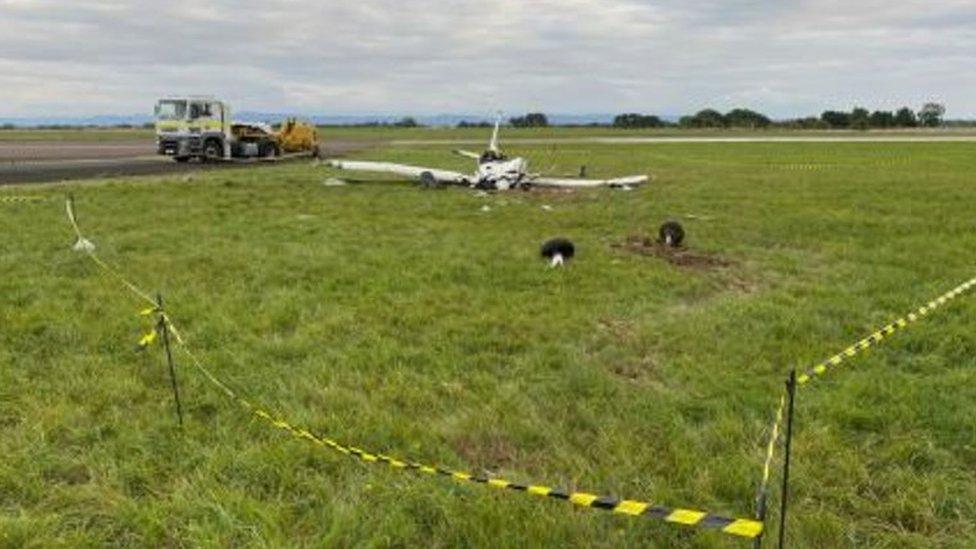Loose tube led to Teesside International plane crash that injured three
- Published

The plane crashed shortly after take off at Teesside International Airport on 25 September 2021
A loose tube in a plane's engine led to a crash which seriously injured three people, investigators have concluded.
The four-seater Grumman AA-5 crashed just over a minute after taking off from Teesside International Airport for a sightseeing flight on 25 September.
The Air Accident Investigation Branch (AAIB), external said the pilot attempted to turn the plane for an emergency landing but it was not going fast enough.
It made three safety recommendations and one demand for action.
The 63-year-old pilot was taking two people for a one hour-long flight up the coast to Tyneside when the crash happened.
'Lack of practise'
The aircraft took off shortly after 08:30 GMT but 14 seconds later, and having reached about 120ft (37m), the engine had a sudden and significant loss of power.
Investigators concluded there would have been enough runway left for the pilot to land back on but, due to the angle of the plane, he could not see it and believed he had passed the airport boundary.
Ahead of him was a field which he had previously considered as an emergency landing site but discounted as there were animals and people in it.
Beyond that was the River Tees so the pilot, who had 1,614 hours of flying time, attempted to execute a turn and land back on grass at the airfield.
He made the manoeuvre without sufficient airspeed and the plane was too low so it stalled and crashed, the investigators said.
They said although he had practiced a turnback three times in the previous year, he still had a "lack of practise" of the manoeuvre which was coupled with having to conduct an engine failure checklist.
'More training'
They concluded the pilot's "extremely high workload" in those few seconds "would have made a successful turnback with very limited power extremely challenging".
The AAIB also noted it had investigated 16 similar crashes between 2011 and 2021 in which there were "five attempted turn backs all of which resulted in fatalities or injuries".
Inspection of the crashed craft revealed a piece of tube from the carburettor had come loose in the engine damaging one of its four cylinders which caused the power loss.
The reason for its coming loose was "not established", the AAIB said, although it had held for six years and 601 flying hours.
Their three recommendations involved the UK Civil Aviation Authority (CAA) offering more training and guidance to pilots about partial loss failure.
The AAIB said in response to its call for action, the CAA has agreed to discuss concerns about the loose tube with the regulators of the engine type.

Follow BBC North East & Cumbria on Twitter, external, Facebook, external and Instagram, external. Send your story ideas to northeastandcumbria@bbc.co.uk, external.